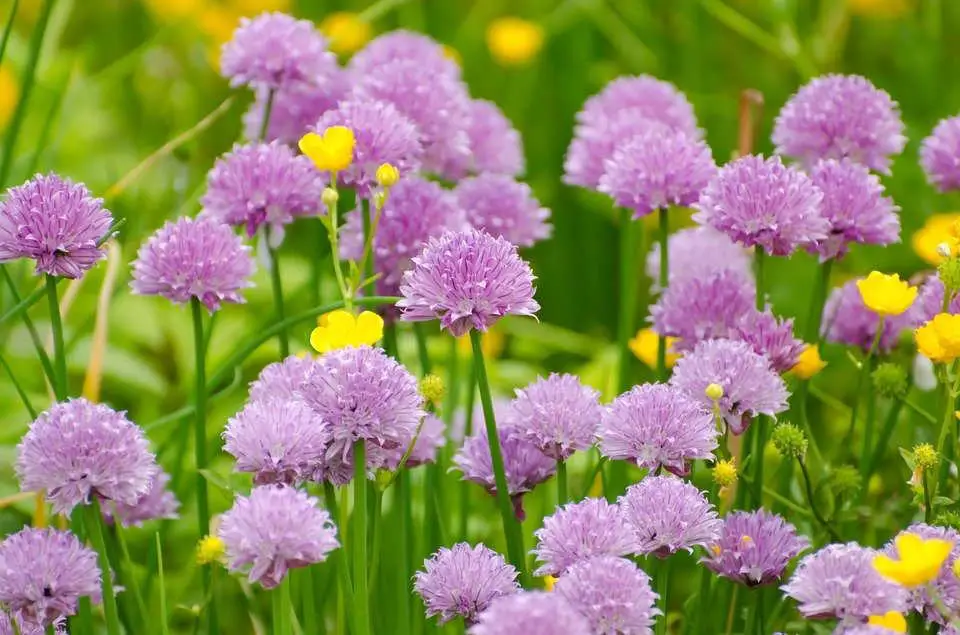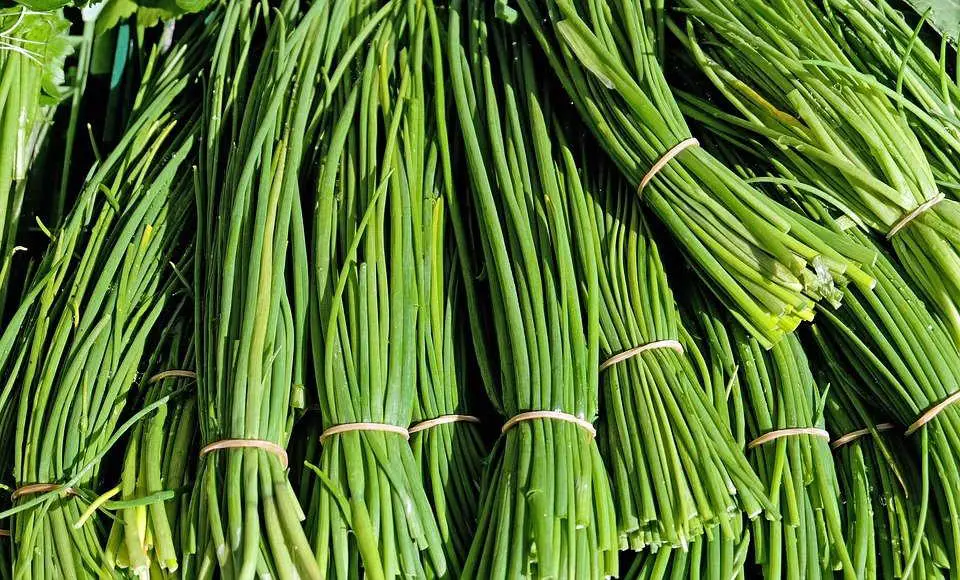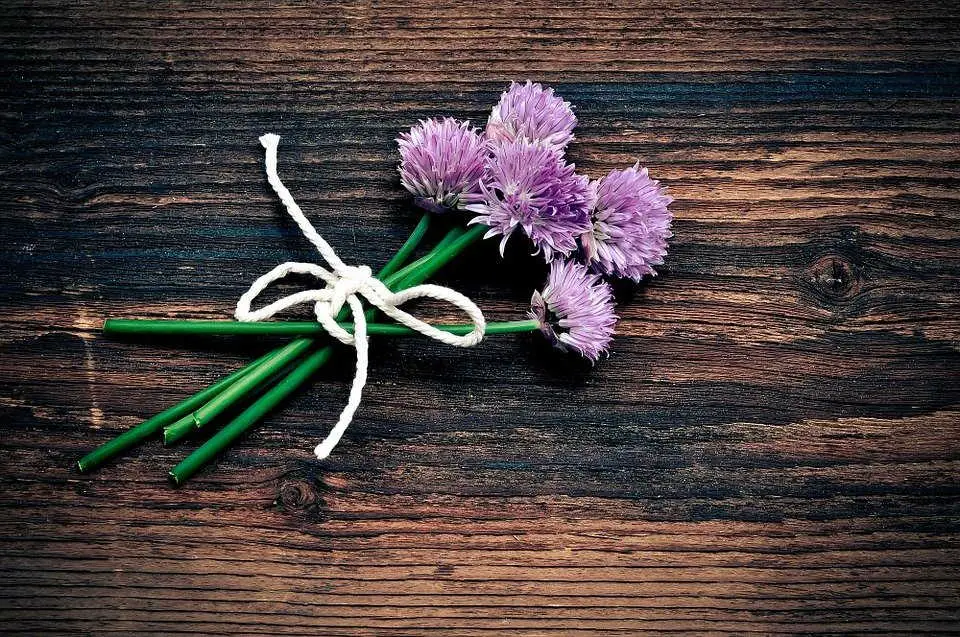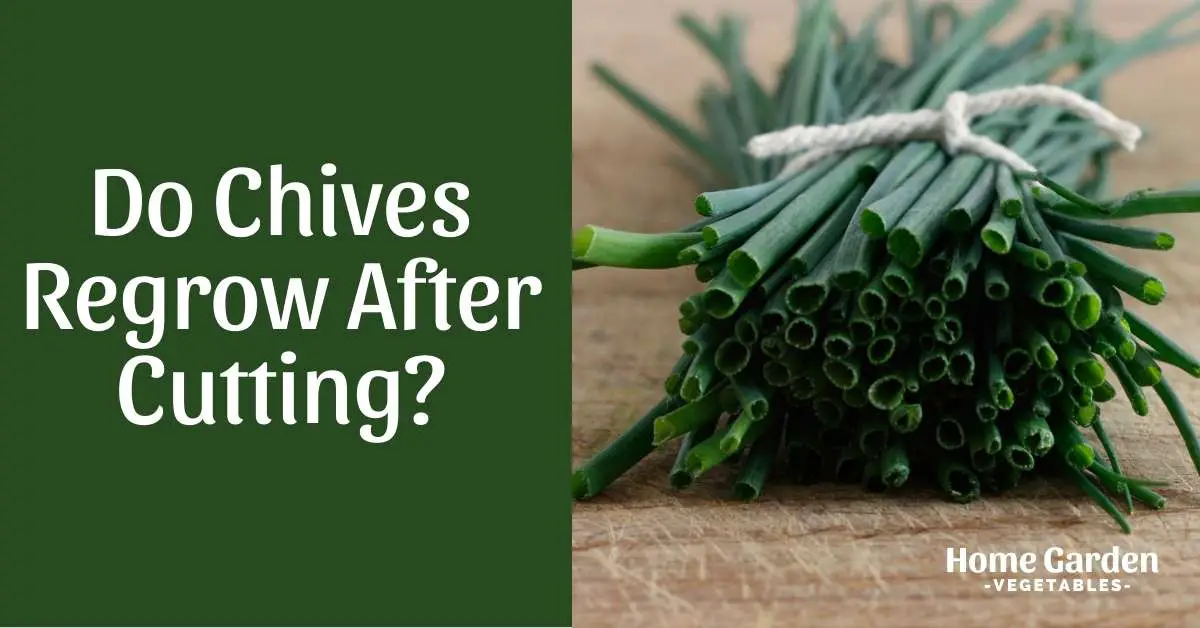Chives are beautiful herb plants to have in your garden. Chives are easy to grow and don’t attract many pests and diseases. Chives are perfect for beginner vegetable gardeners because they are so easy to grow.
Chives are one of those herbs you can plant once and they keep coming back year after year. I often will plant chives where weeds grow. This helps keep weeds at bay.
Reader Poll: What online courses would interest you?
Chives produce plenty of cuttings if you know how to harvest them right. Do chives regrow after cutting? How should you cut them the right way without killing the plant?
Continue reading and you’ll find out all about harvesting chives. Keep chives growing for a continued harvest season after season.

When To Harvest Chives?
There isn’t a single best time to harvest chives. You can start picking them once the shoots are at least 6 inches tall. This usually occurs in about 30 days after transplanting or 60 days after sowing the seeds in the garden.
Subscribe to our newsletter!
Chives won’t produce much during the first year of growth. Chives will start delivering to their truest potential from the second season.
There are some further considerations on when to harvest chives. Generally, gardeners recommend harvesting chives before the plants begin to flower. Harvesting helps chives in utilizing all their energies into promoting better growth. You’ll want to snip the leaves in the morning as soon as the dew dries on them.
This is the time when the shoots will have the highest concentrations of flavors and oils. Avoid harvesting during the hottest afternoon hours.
You can pick the leaves as needed all through the summers. Chives die back in winters in the colder regions but remain dormant. The chive plants stay dormant during the cold season until it’s springtime and you see fresh green blades peeking from the soil again!
How Often Can You Harvest Chives?

It’s natural to be a little nervous when harvesting your herbs, especially if it’s your first time growing them. You wouldn’t want to take up the plant’s energies, leaving them weak and dying. It’s almost never the case with chives. These are vigorous plants that will regrow with more energy each time you harvest.
Do chives regrow after cutting every time? You wouldn’t want to damage the plants by harvesting more than they would like.
During the first year of growth, the plants are still young and their roots are still developing. Young chive plants don’t have the energy for a continued harvest. Harvest chives three to four times during the first year of growth but not more than that.
In the later years, you can harvest more often. In fact, regular pruning or harvesting keeps them growing.
Harvest the chives plants that are older than a year once each month to keep them producing more greens. It takes 4 weeks for the plants to grow a fresh supply of greens, tall enough to harvest and used in the kitchen.
How To Harvest Chives?

Do Chives regrow after cutting? Yes, absolutely! If you harvest them correctly, you’ll continue seeing new growth for bundles of fresh harvest in the coming seasons.
With many herbs, like coriander and mint, the common practice is to snip the fresh, new tips.
With chives, it’s a little different.
Here are the steps to harvest chives if you are to make sure the plants rejuvenate soon with fresh, new growth:
- Hold a clump of leaves down to the soil level.
- Cut the clump using sharp pruning shears 1 to 2 inches above the soil level.
- Dilute a general-purpose balanced liquid fertilizer in water and water the plants you just trimmed.
- In about 4 weeks or so, you’ll find new stems ready to be chopped once again and used in the kitchen.
What About The Flower Stalks?

Unless you want chives to drop seeds to the ground, produce more plants, and spread beyond its territory, you’ll want to cut the flower stalks down to the soil level. If you haven’t trimmed the plant until after blooming, you can prune flowers and utilize them in the kitchen. Though the flower stalks are tough and not very appetizing, the beautiful flowers make a unique garnish on dishes and intriguing addition to salads.
Deadheading the chive plants, or removing the flowers once they’re done blooming also allows the plant to focus its energies on green growth. It keeps your garden neat and tidy and prevents the chives plantation from spreading beyond the limits you’ve designated for it.
How To Store Chives?
Chives are used best right after harvesting because that’s when they’ll give the best flavors. You can chop them and add them to salads, soups, and dips for a burst of fresh color, aromas, and taste. The subtle oniony, garlicky flavor complements many dishes beautifully.
If you’re not using them right away, you can also preserve them for later by drying them. To dry chives, spread the leaves out on a baking tray, cover them with a cheesecloth and place them in a warm spot that’s sufficiently ventilated and away from direct sunlight. Turn them every few days and store them in an airtight container once they’re completely dried, which will typically take about a week.
Conclusion
So chives do, in fact, regrow after cutting. Pruning promotes the healthy growth of plants and keeps them coming back with renewed vigor. You can maintain a beautiful chives garden by staying on top of the harvest. Adorn your dishes with the lovely flowers and leaves while the plants continue producing more for your table.

